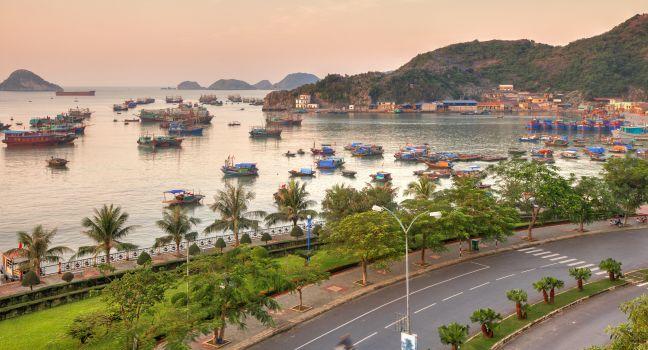Cat Ba National Park

Home to 32 species of mammals, including the endangered white-headed langur monkey, which lives among the jungle terrain and freshwater lakes, Cat Ba National Park covers about 263 square km (101 square miles) of Cat Ba Island. Within its tropical rain forest are 78 species of birds and 20 species of reptiles. In addition to impressive beaches and mangroves, within its boundaries are two historical caves once used as clinics during the Vietnam War. Signs outside the park offer four hiking routes; 1, 2, and 3 cost 40,000d, and 4, the Cang Viet Hai Trail, costs 80,000d. Active travelers can tackle this demanding (yet rewarding) 18-km (11-mile) trail across the park if they arrive before 10 am. For a striking vista of the surrounding scenery, the view from the park's observation tower is hard to beat. Be warned, though, the climb-up metal ladders and cliffs are not for the faint of heart. The park is about 30 minutes from Cat Ba Town.



